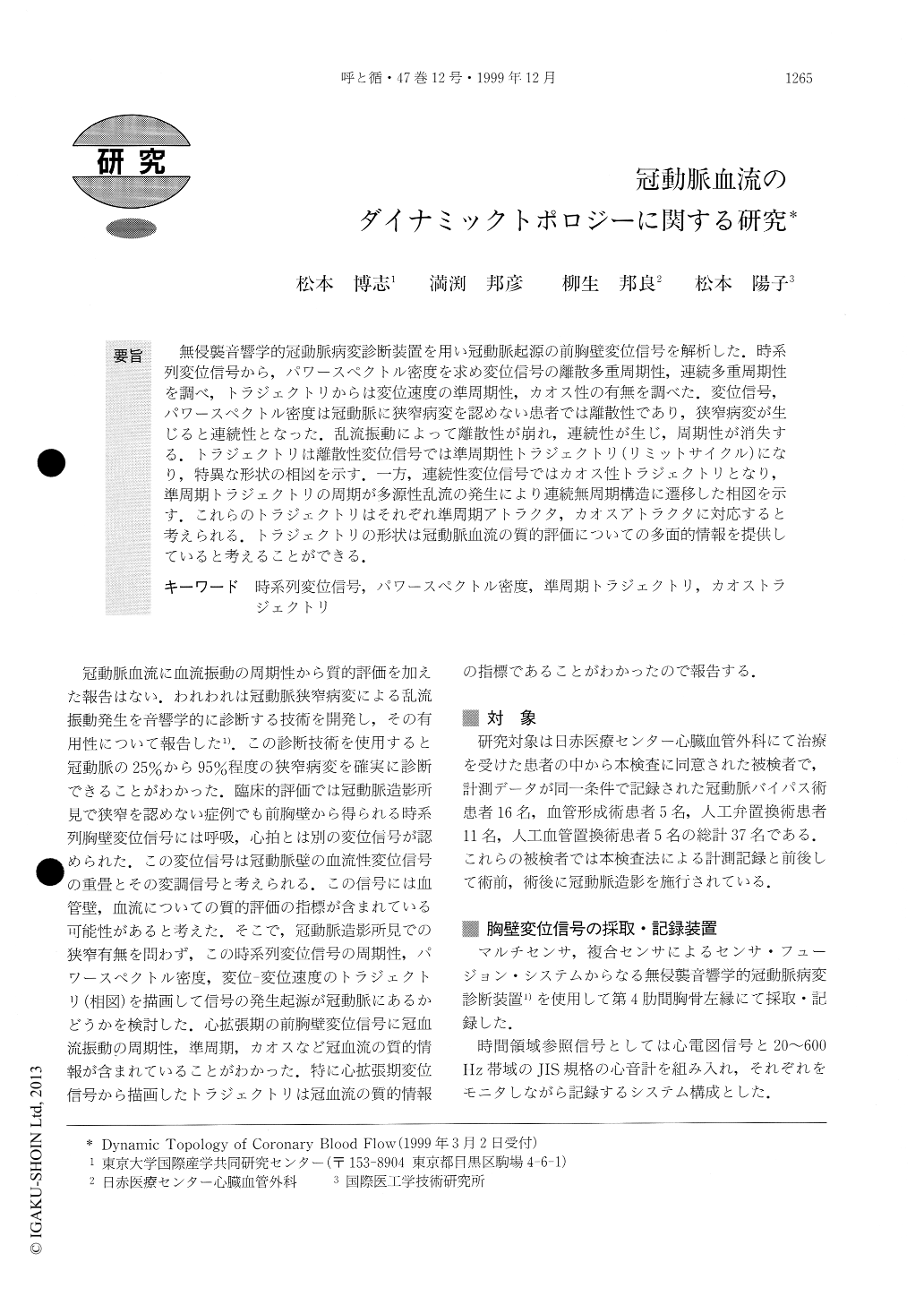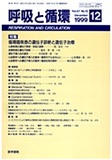Japanese
English
- 有料閲覧
- Abstract 文献概要
- 1ページ目 Look Inside
無侵襲音響学的冠動脈病変診断装置を用い冠動脈起源の前胸壁変位信号を解析した.時系列変位信号から,パワースペクトル密度を求め変位信号の離散多重周期性,連続多重周期性を調べ,トラジェクトリからは変位速度の準周期性,カオス性の有無を調べた.変位信号,パワースペクトル密度は冠動脈に狭窄病変を認めない患者では離散性であり,狭窄病変が生じると連続性となった.乱流振動によって離散性が崩れ,連続性が生じ,周期性が消失する.トラジェクトリは離散性変位信号では準周期性トラジェクトリ(リミットサイクル)になり,特異な形状の相図を示す.一方,連続性変位信号ではカオス性トラジェクトリとなり,準周期トラジェクトリの周期が多源性乱流の発生により連続無周期構造に遷移した相図を示す.これらのトラジェクトリはそれぞれ準周期アトラクタ,カオスアトラクタに対応すると考えられる.トラジェクトリの形状は冠動脈血流の質的評価についての多面的情報を提供していると考えることができる.
Background : It has been reported that coronary stenoses produce sounds due to turbulent blood flow in partially occluded coronary arteries. By use of a new sensor fusion system of noninvasive laser photocar-diometer technology, the coronary artery sounds were easily detected and analyzed using the appropriate sig-nal processing approach. The present study reports new findings on the dynamic topology of coronary blood flows. Methods : Patients were selected from those who had undergone intervention and/or surgery following CAG at the Japanese Red Cross Medical Center. Diastoliccoronary noises were recorded during 10 beats (about 10 sec.) at the bed side and then calculated as time serial signals, power spectral density and trajectory. The data obtained from the subjects before and after bypass surgery as well as from subjects after non-bypass sur-gery were analyzed for determining quasi-periodic or chaotic signals.
Results : Detailed data proved that the turbulence flows due to stenoses and meandering of the coronary artery, stenoses after PTCA and little improvement of coronary blood flow following CABG had produced chaos in coronary blood flow. It was recognized that though diastolic noises of the subjects without stenoses had contained discrete time serial signal, discrete spec-tral power density and multi-periodic trajectory, those of the subjects with stenoses or meandering of the coronary artery had contained non-discrete time serial signal, non-discrete spectral power density and chaotic trajectory. The rest of the stenoses even following PTCA and CABG also produced turbulent flows so that chaotic signals were detected in the diastolic noises detected on the chest wall. An additional PTCA or CABG eliminated the chaos in coronary blood flow. An appropriate recovery of coronary blood flow was obser-ved in the spectral characteristics. Trajectory was an indicator fo chaos in coronary flow dynamics.
Conclusion : The diastolic noises detected on the ante-rior chest wall were analyzed to determine whether multi-periodic or chaotic signals had been contained or not. In the normal coronary artery, flow dynamics showed quasi-periodic cycles. On the other hand, turbu-lent flows produced chaos in coronary blood flow in the sclerotic coronary artery. Trajectory is an indicator of coronary flow dynamics

Copyright © 1999, Igaku-Shoin Ltd. All rights reserved.


